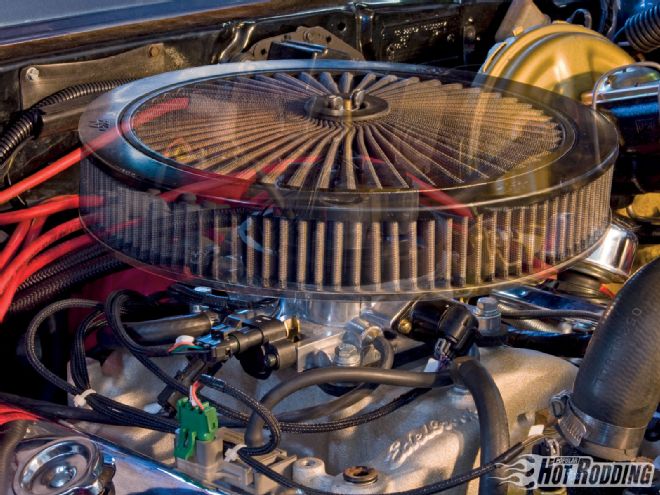
Making the switch to EFI has traditionally been considered expensive and complicated-until now. The old story used to be that outside of the EFI system and hardware, the cost increased exponentially due to hiring a person who specialized in ECU tuning. But technology has a way of advancing, and the days of complicated programming and the need for a dedicated EFI tuner are almost all but gone for the typical mild street-driven combination. To prove our point, we recruited a '69 Pontiac Firebird that belongs to ABC News 20/20 anchor Chris Cuomo.
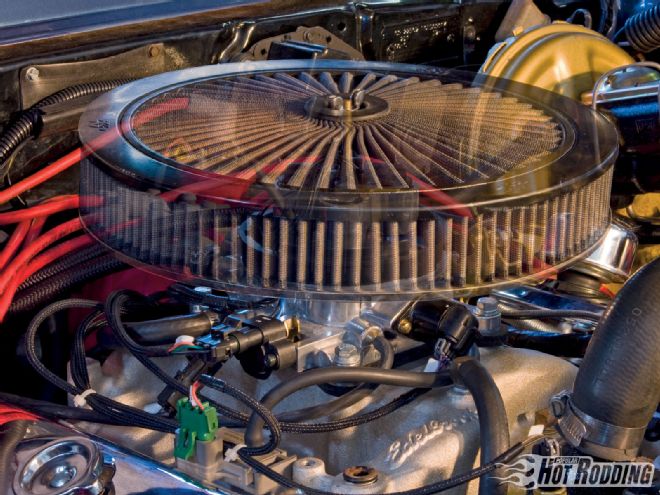
The 400ci Poncho was the perfect candidate as it is mostly stock, save for full-length headers, a larger exhaust system, a mild camshaft, and an Edelbrock dual-plane intake. Cuomo upgraded to a larger carburetor last year, but the Firebird didn't run properly, even after making several adjustments. He turned to the newly released Holley Avenger EFI system to solve his idle and driveability issues. The Avenger EFI is an all-inclusive package of parts, and it offers self-tuning capabilities-making it easier for the average enthusiast to say "yes" to an EFI conversion.
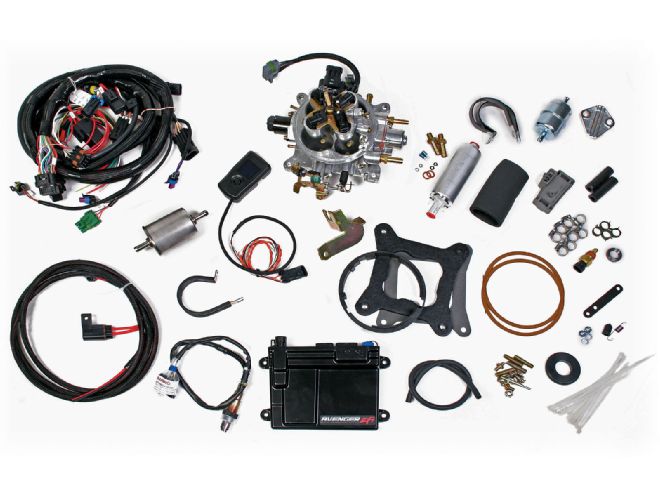 The Avenger EFI is offered in four versions including a two-barrel TBI, four-barrel TBI, four-barrel multipoint, and a Stealth Ram setup. The two TBI versions are simpler and don't require a new manifold, which is included in the Stealth Ram and multipoint systems. According to Holley, all the systems are "bolt-on and go" with self-learning capabilities.
The Avenger EFI is offered in four versions including a two-barrel TBI, four-barrel TBI, four-barrel multipoint, and a Stealth Ram setup. The two TBI versions are simpler and don't require a new manifold, which is included in the Stealth Ram and multipoint systems. According to Holley, all the systems are "bolt-on and go" with self-learning capabilities.
Holley offers three different levels of EFI systems, and each one is a complete kit under one part number, making it easier to purchase. The Avenger EFI lineup is the base system, and users can upgrade to the next level, dubbed HP EFI, which offers more versatility. The Dominator EFI system is the top of the food chain and is a no-holds-barred setup for serious street and race engines. Given the mods on Cuomo's Poncho, the reps at Holley suggested a TBI system from the Avenger EFI lineup.
Throttle body injection (TBI) is a simplistic EFI setup that was underhood many mid-'80s GM products. TBI incorporates the fuel injection with the throttle body-creating a simple system that eliminates the need for a new manifold when making the switch to EFI. A TBI system will bolt-on to an existing manifold with ease and even looks like a carburetor setup in many respects. It can be easily thought of as a combination between the digital world of EFI and the old days of carburetor induction. Holley does offer a multipoint fuel injection system in other versions of the Avenger EFI lineup. The multipoint fuel injection features a fuel injector spraying directly into each runner.
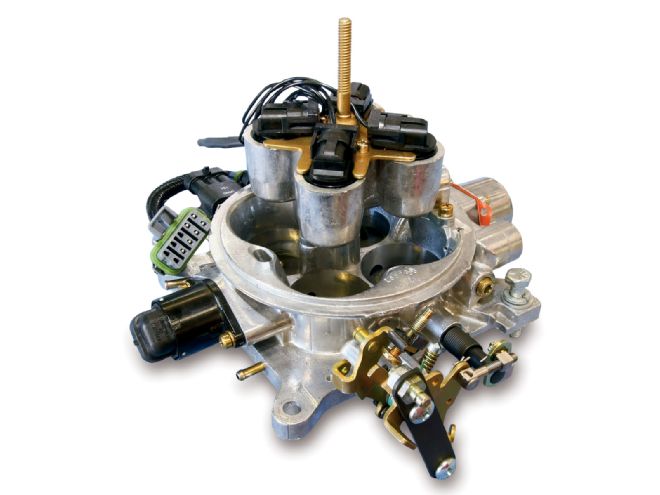 Throttle Body Injection (TBI) uses a body like a carburetor, but has four electronically controlled fuel injectors sitting above the throttle blades. We used the four-barrel version, and it bolts to any four-barrel-style intake manifold without any modifications.
Throttle Body Injection (TBI) uses a body like a carburetor, but has four electronically controlled fuel injectors sitting above the throttle blades. We used the four-barrel version, and it bolts to any four-barrel-style intake manifold without any modifications.
We decided to go with the Avenger EFI TBI system for two reasons: cost and ease of installation. The price tag for this Avenger EFI four-barrel TBI system (PN 550-400) is $1,999. Some might cringe when looking at the cost, but we didn't think it was unrealistic considering the Avenger EFI came nearly complete including a fuel pump, two fuel filters, ECU, wiring harness, bolt-on TBI unit, sensors, gaskets, and a handheld programmer (eliminating the need for a laptop). But the biggest selling point for us was the self-learning capabilities of the ECU, which eliminates the need for custom computer programming. That saves time and money.
We ventured to Unique Performance in Coram, New York, a very popular muscle car specialty shop, for the installation. It was the first Avenger EFI system that proprietor Nick Giordano and head technician Andy Schlitz had installed, and both commented on how easy the system was laid out. The only parts not included in the Holley kit were fuel lines and a couple of fittings. One quick call to the local distributor netted us 10 feet of Earl's braided line and the required fittings for a total of $68.
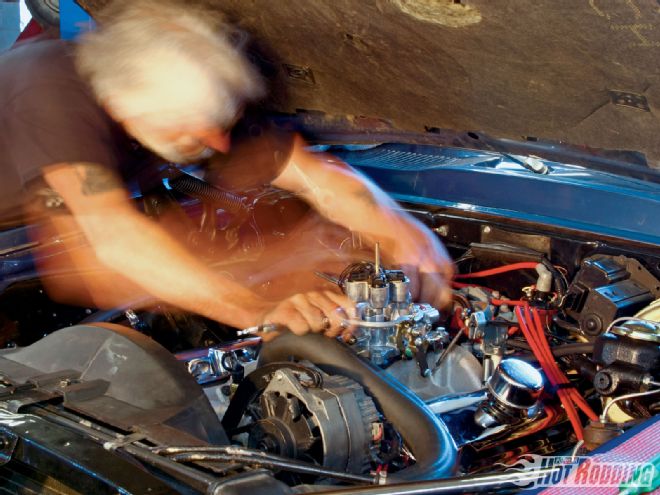 The wiring harness is laid into place neatly, and Unique Performance technician Andy Schlitz hooked up the throttle linkage and various sensors. It took Unique Performance two days and would normally cost the customer $1,500 for the installation. As Unique Performance proprietor Nick Giordano says, "Everything takes time, from running the wires to neatly installing the fuel line."
The wiring harness is laid into place neatly, and Unique Performance technician Andy Schlitz hooked up the throttle linkage and various sensors. It took Unique Performance two days and would normally cost the customer $1,500 for the installation. As Unique Performance proprietor Nick Giordano says, "Everything takes time, from running the wires to neatly installing the fuel line."
The installation took Unique Performance just two days, and the hardest part was figuring out the best location for the ECU and fuel pump. The ECU was installed underhood and out of the way. The pump was bolted on the rear framerail away from any moving parts and the exhaust. It was mounted below the tank, so it's gravity-fed. Before firing up the engine, the ECU needed some important information inputted so it could reference a base program for the initial startup.
"The EFI has a self-tuning feature for the base fuel table, which is by far the most critical and time-consuming portion of the EFI tuning process," says Doug Flynn of Holley. "The self-tuning feature works on feedback from the wideband oxygen sensor, and it will adjust the fuel curve to maintain a target air/fuel ratio under all speed and load conditions. The user needs to drive the vehicle around and the self-tuning function will very quickly modify the base fuel table. This can also be done on a dyno or at a racetrack. Other parameters, such as acceleration enrichment-the accelerator pump function-can be easily increased or decreased if necessary via the handheld tuner. Most users will find the calibrations created by the Wizard will not require any modifications to the various adjustable parameters, but there is always the option to do so. The user can change the desired air/fuel ratio for idle, cruise, and WOT to optimize power and economy independently."
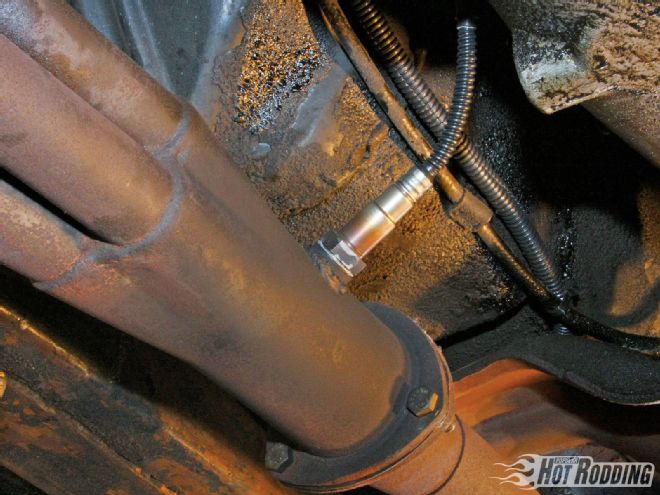 Holley includes a wideband O2 sensor, which requires a bung to be installed in the header. This is what makes self-tuning possible as the ECU will constantly correct the fuel curve to achieve the target air/fuel ratio.
Holley includes a wideband O2 sensor, which requires a bung to be installed in the header. This is what makes self-tuning possible as the ECU will constantly correct the fuel curve to achieve the target air/fuel ratio.
Smooth. That's the best way to describe how the new Holley Avenger EFI system made the Pontiac 400ci feel when compared to the carburetor induction system it replaced. The throttle response was exceptional and the car will break the tires loose from a 25-mph roll with ease. Giordano concurred, and he had the benefit of driving the Firebird before and after the Avenger EFI. He says, "The car runs so much better from idle, and the throttle response is great. It is definitely making more power too with the EFI."
The constant evolution of technology is all around us, and with the next wave of advances always comesincreased capabilities and reduction in cost. The Avenger EFI is proof of that evolution.
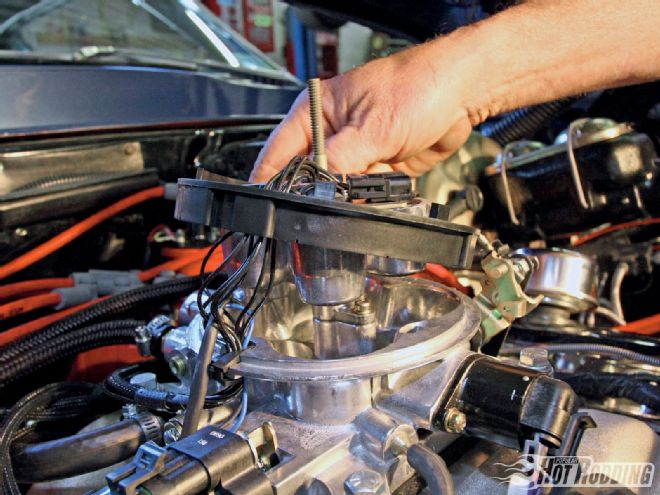
A Higher Flying 'Bird
The turn of the key signals the first change: No more pumping the pedal to bring my Bella Blue Bird (after my daughter) to life. The familiar roar fills my ears as she settles into idle sooner than usual. As the 'Bird gets warm, you hear the "self learning" that the Holley Avenger system enables. Literally, you feel the car figuring out the right air/fuel mix. And the learning comes quickly.
Out on the road, I punch it a little when getting ready to shift into Second, and whammo, a pleasant surprise: The tires break loose at about 25 mph! The warmed-over 400 has plenty of grunt, thanks to a Ram Air III cam, but the smoothness of the powerband is what really gets your attention now.
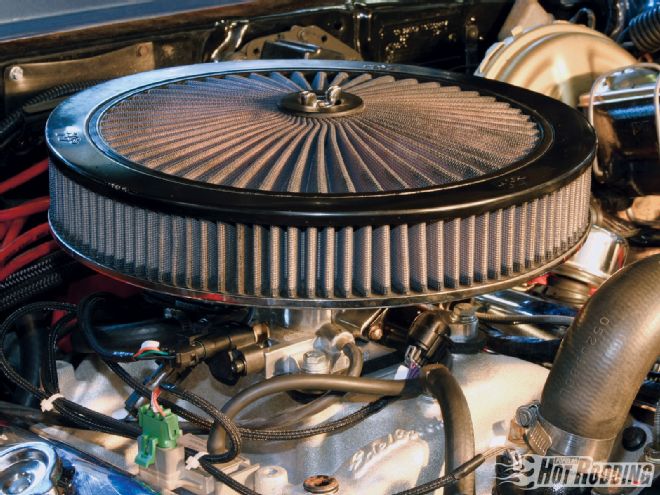 A rubber ring slides on top of the TBI, enabling a traditional carburetor air cleaner to be installed.
A rubber ring slides on top of the TBI, enabling a traditional carburetor air cleaner to be installed.
Three big differences were apparent within 10 miles: The familiar smell of gas is reduced to barely a whisper of petrol essence, the power is not "chunky," it just keeps coming ... and then the gravy ... while my speedo and tach needles were whipping around, my fuel gauge didn't move at all!
The E in EFI stands for electronic, but it could also stand for "efficient," literally defined as "performing in the best manner possible with the least waste."
I have always clung to the simplicity and purity of old-school hot rodding: The less clutter and technology in the engine compartment, the better. But I have to say, the Avenger EFI is barely noticeable under the air cleaner, and could easily be mistaken for a two-barrel. All of the wiring and the module were easily snaked around and buried in the subtle black meshing, and the new handheld tuner makes it easier to tune than any carb. After all, you tune the system without any wrenching! To be sure, the driveability seems better so far than any of the carbs I've used over the years. Bottom line: More throttle response, more tire smoke, and much more time enjoying the car between fill-ups! What is better than that? -Chris Cuomo
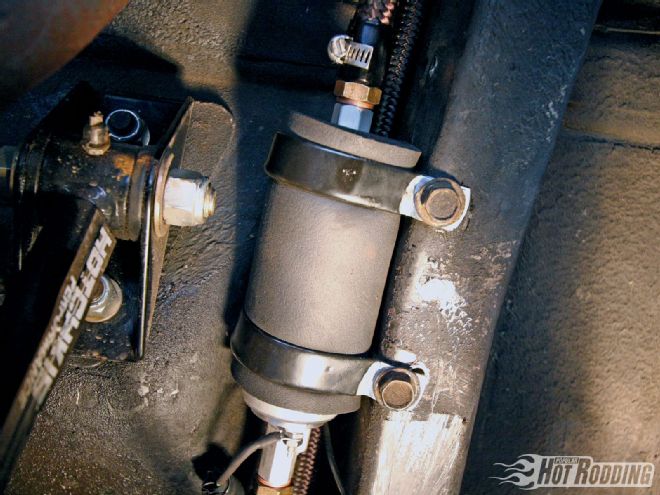 A fuel pump and two fuel filters are included in the Holley Avenger system. The instructions recommend placing a fuel filter before and after the fuel pump for best performance.
A fuel pump and two fuel filters are included in the Holley Avenger system. The instructions recommend placing a fuel filter before and after the fuel pump for best performance.